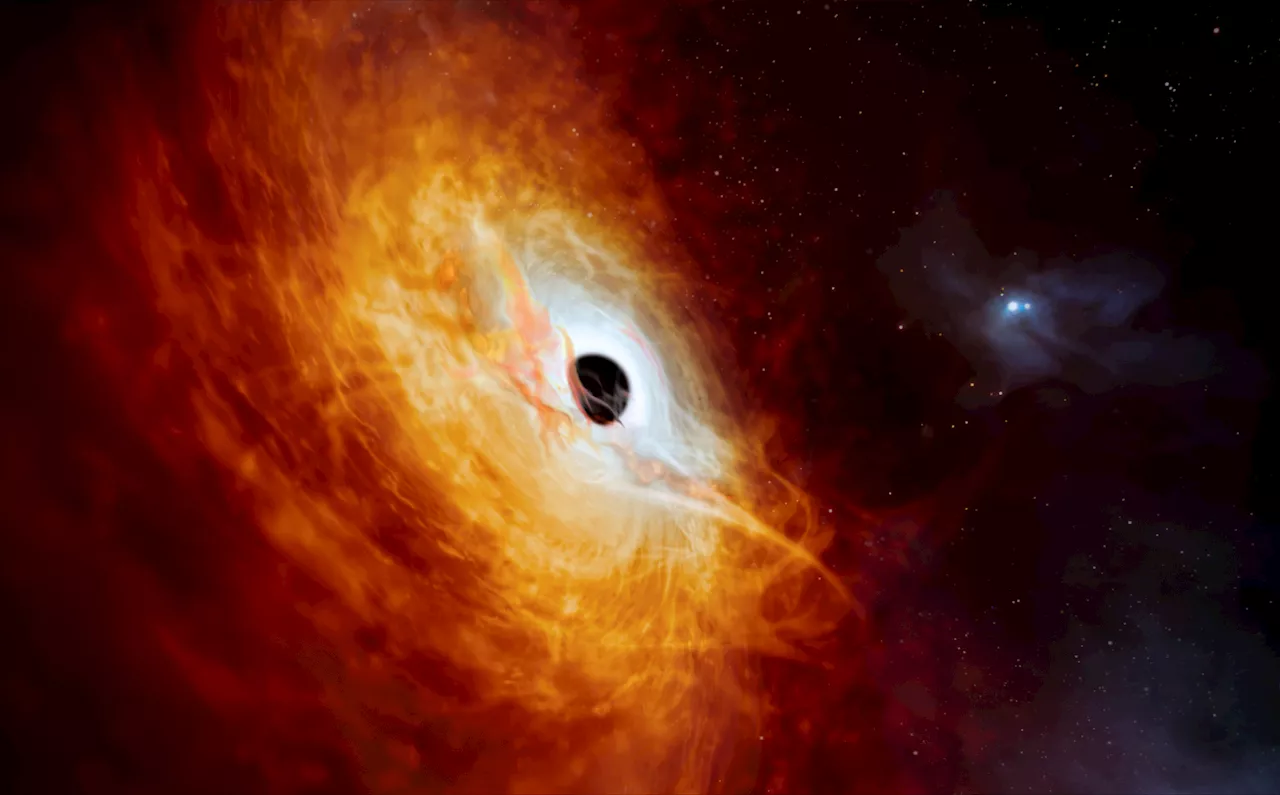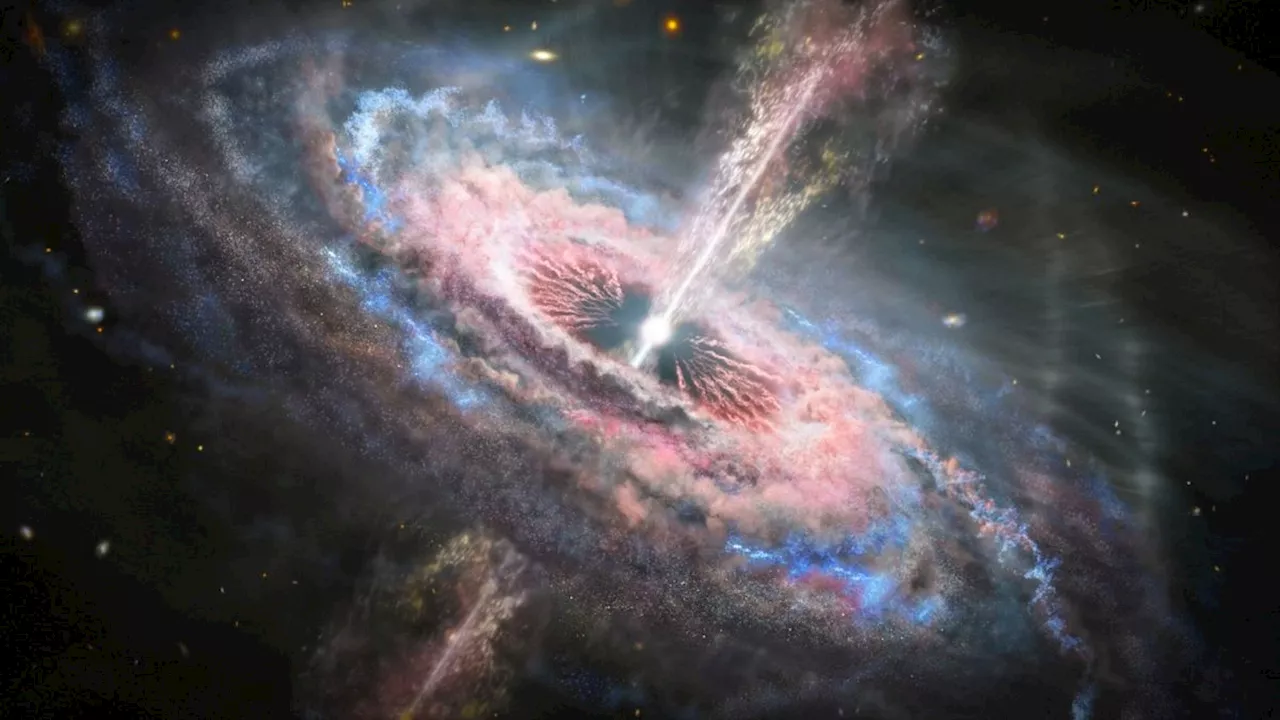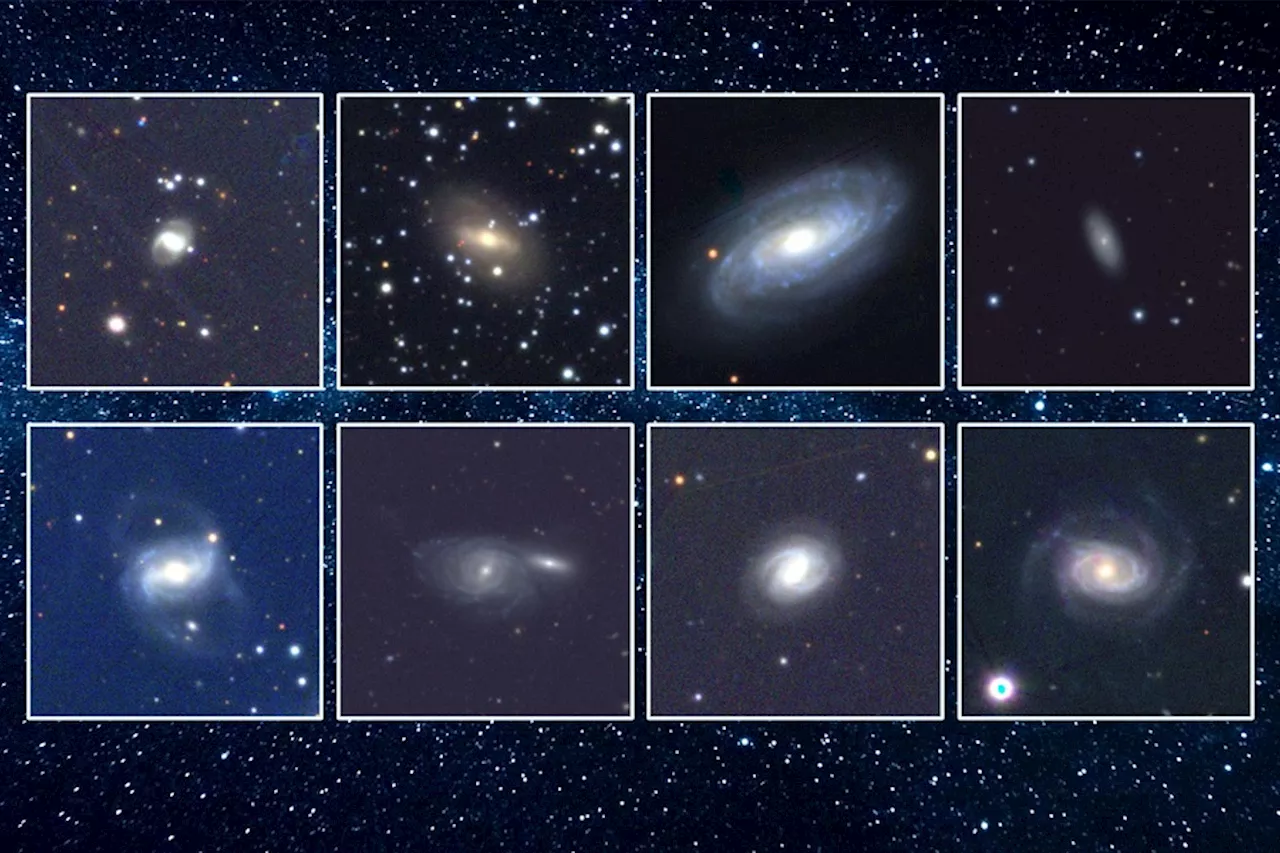Astronomers have characterized a bright quasar, finding it to be not only the brightest of its kind, but also the most luminous object ever observed. Quasars are the bright cores of distant galaxies and they are powered by supermassive black holes.
The black hole in this record-breaking quasar is growing in mass by the equivalent of one Sun per day, making it the fastest-growing black hole to date.
"We have discovered the fastest-growing black hole known to date. It has a mass of 17 billion Suns, and eats just over a Sun per day. This makes it the most luminous object in the known Universe," says Christian Wolf, an astronomer at the Australian National University and lead author of the study published today in. The quasar, called J0529-4351, is so far away from Earth that its light took over 12 billion years to reach us.
" says ANU PhD student and co-author Samuel Lai. Seven light-years is about 15,000 times the distance from the Sun to the orbit of Neptune. An automated analysis of data from the European Space Agency's Gaia satellite passed over J0529-4351 for being too bright to be a quasar, suggesting it to be a star instead. The researchers identified it as a distant quasar last year using observations from the ANU 2.3-metre telescope at the Siding Spring Observatory in Australia. Discovering that it was the most luminous quasar ever observed, however, required a larger telescope and measurements from a more precise instrument.
Christian Wolf, Samuel Lai, Christopher A. Onken, Neelesh Amrutha, Fuyan Bian, Wei Jeat Hon, Patrick Tisserand, Rachel L. Webster.While other simulations have modeled black hole growth, new model is the first single computer simulation powerful enough to comprehensively account for the numerous forces and factors that play into ...
Norge Siste Nytt, Norge Overskrifter
Similar News:Du kan også lese nyheter som ligner på denne som vi har samlet inn fra andre nyhetskilder.
 The Brightest Object Ever Seen in the UniverseSpace and astronomy news
The Brightest Object Ever Seen in the UniverseSpace and astronomy news
Les mer »
 Astronomers find record-breaking black hole that swallows a sun a dayAstronomers have found a record-breaking quasar with a black hole at its heart growing so fast that it swallows the equivalent of a sun a day.
Astronomers find record-breaking black hole that swallows a sun a dayAstronomers have found a record-breaking quasar with a black hole at its heart growing so fast that it swallows the equivalent of a sun a day.
Les mer »
 Astronomers report oscillation of our giant, gaseous neighborA few years ago, astronomers uncovered one of the Milky Way's greatest secrets: an enormous, wave-shaped chain of gaseous clouds in our sun's backyard, giving birth to clusters of stars along the spiral arm of the galaxy we call home.
Astronomers report oscillation of our giant, gaseous neighborA few years ago, astronomers uncovered one of the Milky Way's greatest secrets: an enormous, wave-shaped chain of gaseous clouds in our sun's backyard, giving birth to clusters of stars along the spiral arm of the galaxy we call home.
Les mer »
 Astronomers find monster black hole devouring a sun's-worth of matter every dayBen Turner is a U.K. based staff writer at Live Science. He covers physics and astronomy, among other topics like tech and climate change. He graduated from University College London with a degree in particle physics before training as a journalist.
Astronomers find monster black hole devouring a sun's-worth of matter every dayBen Turner is a U.K. based staff writer at Live Science. He covers physics and astronomy, among other topics like tech and climate change. He graduated from University College London with a degree in particle physics before training as a journalist.
Les mer »
 Astronomers See 18 Examples of Stars Getting Torn Apart by Black HolesSpace and astronomy news
Astronomers See 18 Examples of Stars Getting Torn Apart by Black HolesSpace and astronomy news
Les mer »
![]() Photographer Turns the Lens on Amateur Astronomers Who Contribute to ScienceA photographer spent five years traveling the world to turn the lens on amateur astronomers who have contributed to science.
Photographer Turns the Lens on Amateur Astronomers Who Contribute to ScienceA photographer spent five years traveling the world to turn the lens on amateur astronomers who have contributed to science.
Les mer »
